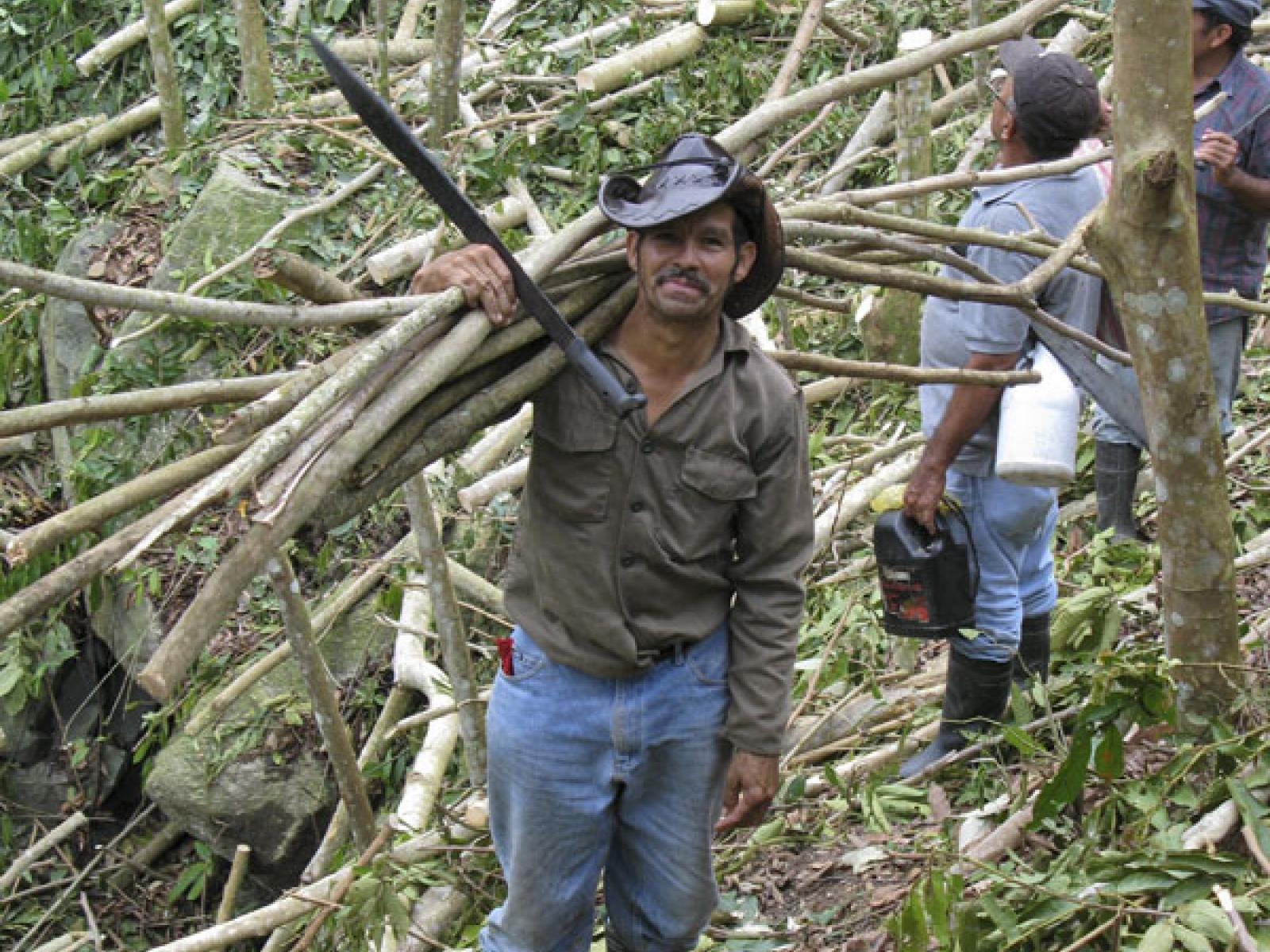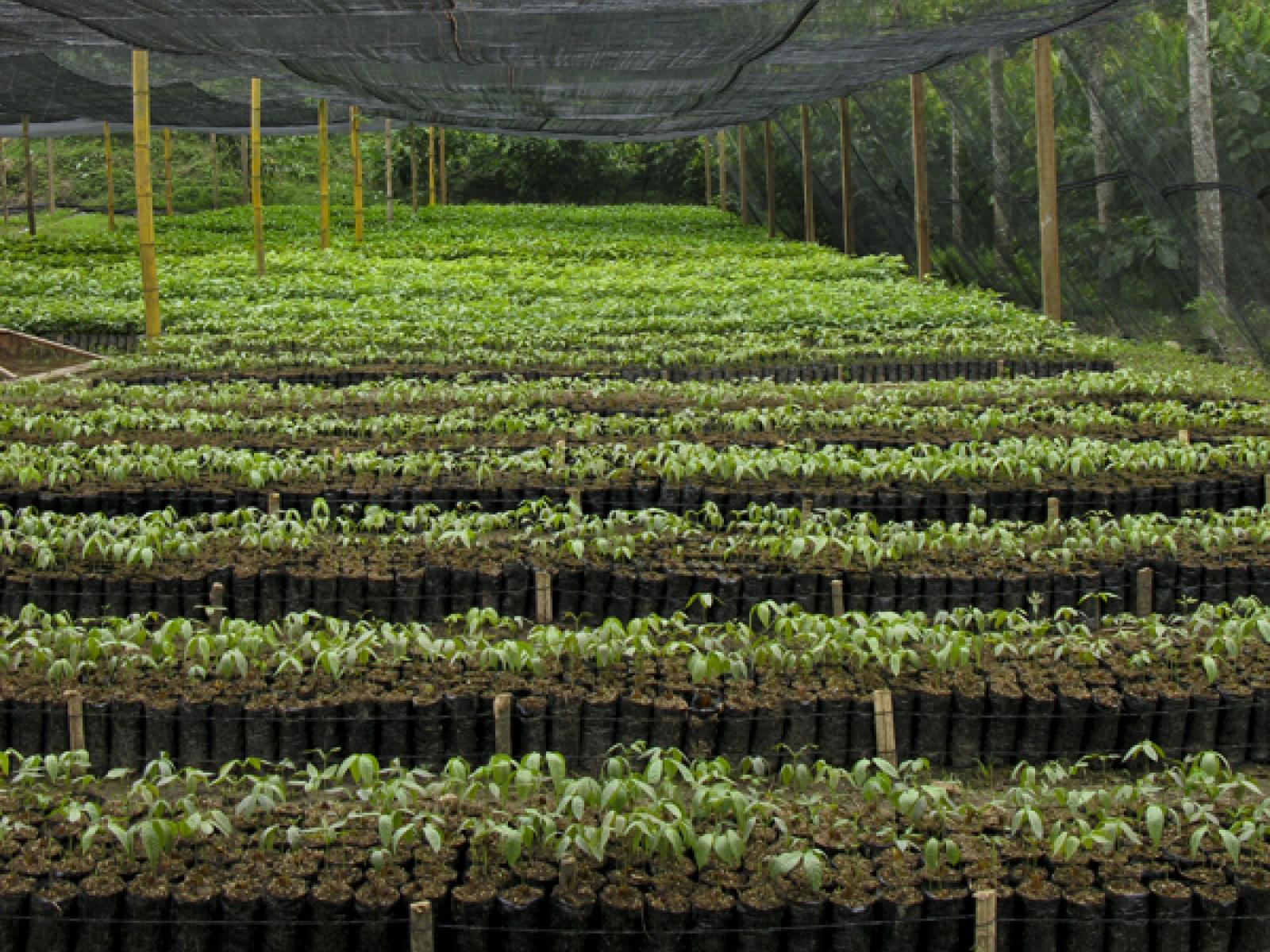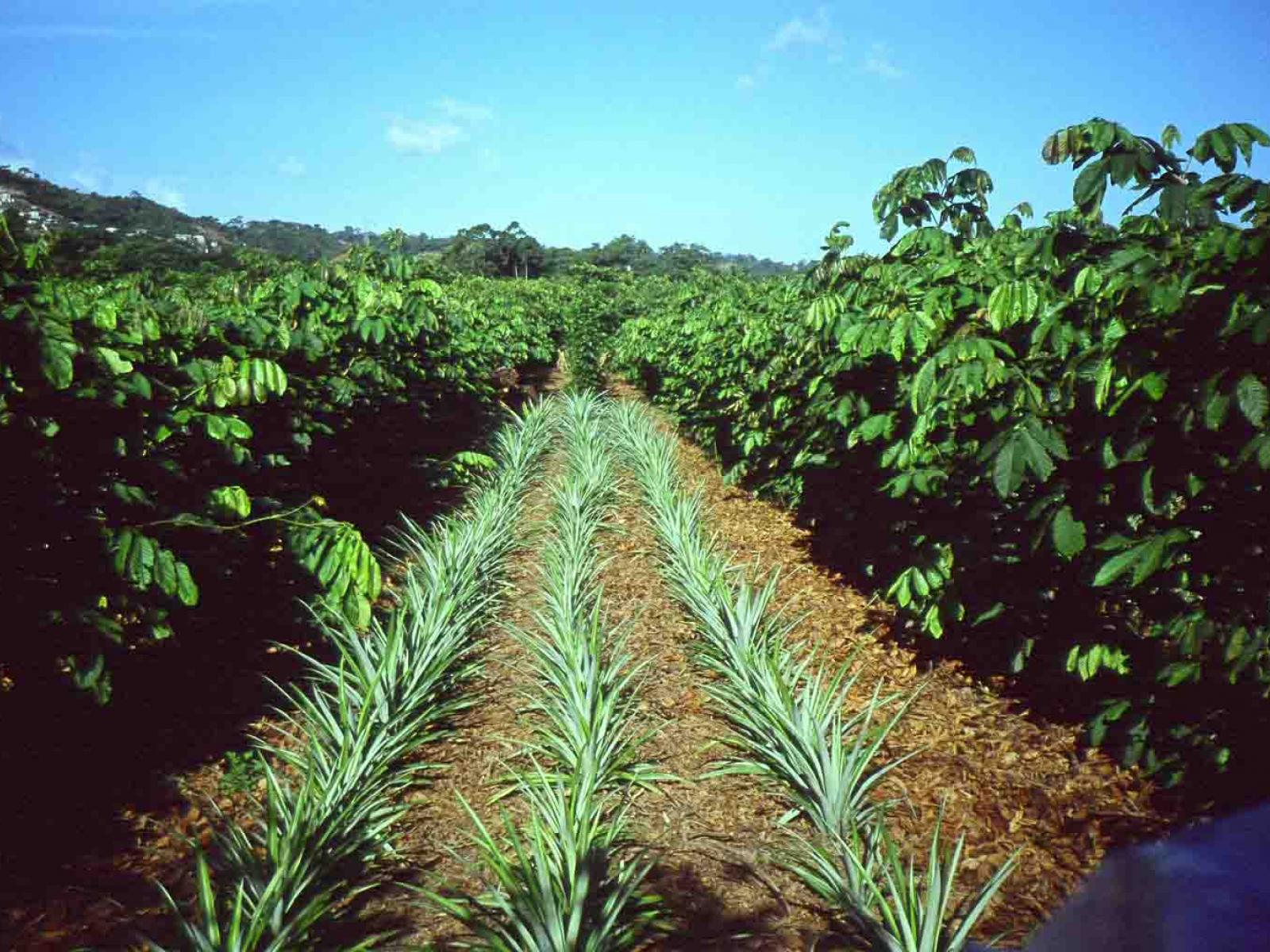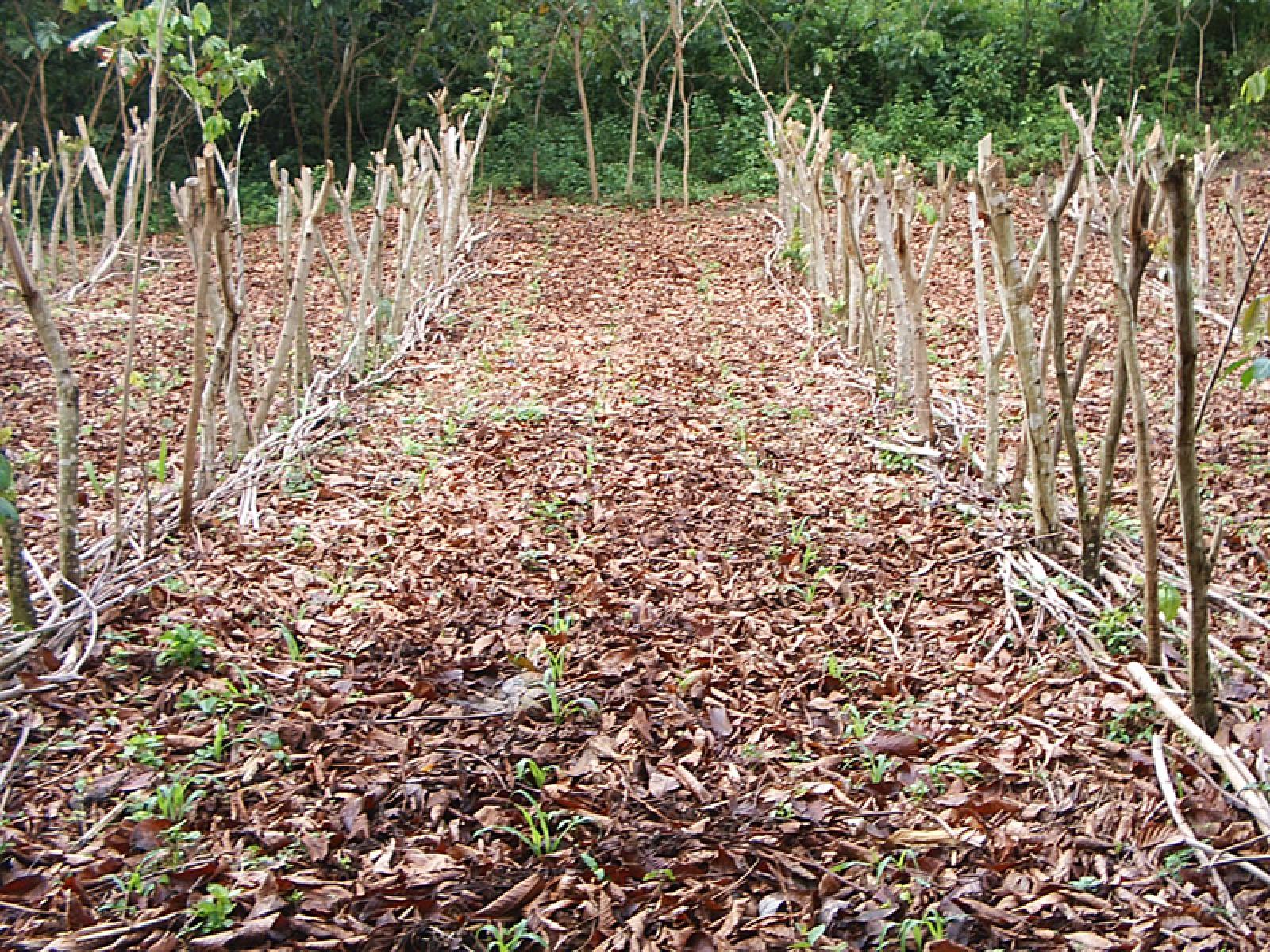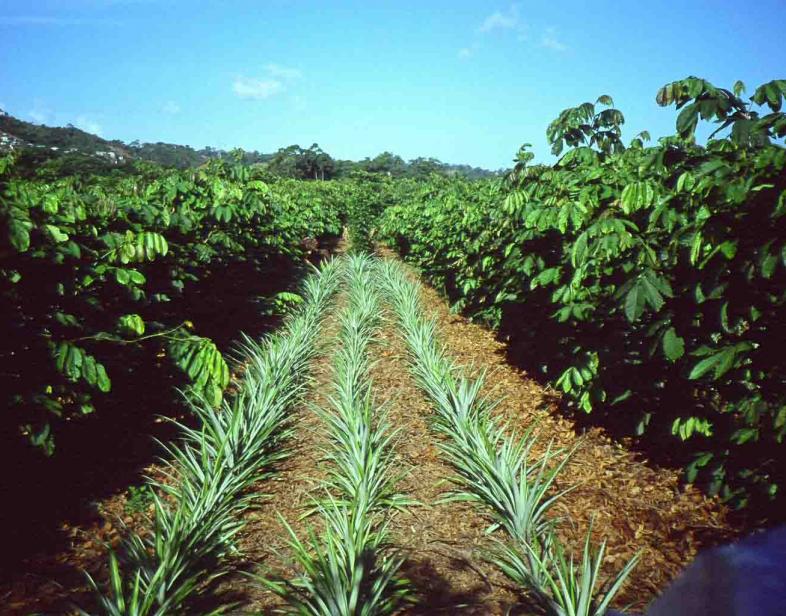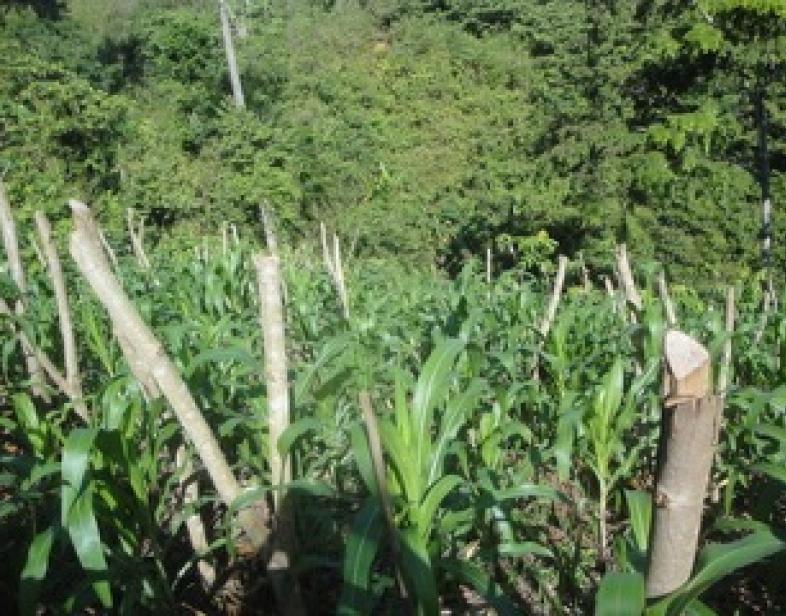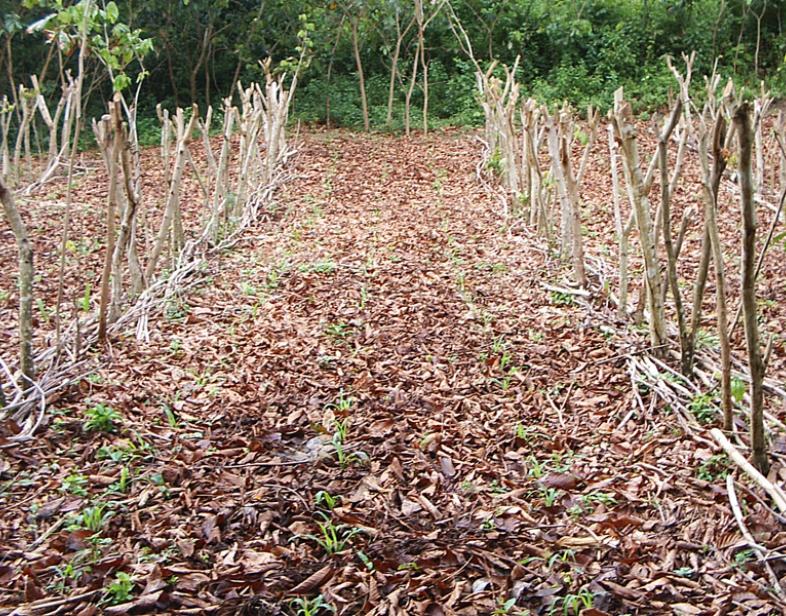An Overview Of Our Solution
The Inga Foundation’s simple but revolutionary agroforestry system of Inga alley-cropping is a scientifically-proven solution to stopping the devastation of tropical rainforests. The ability of the resilient, nitrogen-fixing Inga tree to regenerate and enrich soil depleted by slash-and-burn dramatically transforms the lives of tropical subsistence farming families by providing them food security, firewood, and organic cash crops while significantly reducing global carbon emissions, stopping erosion, protecting wildlife and marine habitats, and preserving natural water sources. This low-input, debt-free, and bottom-up approach (planting Inga edulis seedlings in hedgerows with nourishment crops planted in between the rows) is readily available now and gives families the means to achieve “land for life” with sustainable, regenerative agricultural practices.
- Population Impacted: 2000
- Continent: Europe
Context Analysis
Slash-and-burn is a subsistence farming method used by millions of families in the tropics. Annually, slash-and-burn contributes around 2 billion tons of carbon to the atmosphere--greater than all global transport combined. Families cut down & burn a patch of forest in order to create an area of fertile soil for crops.The soil fertility, however, does not last. Crop failure and erosion drives families who use slash-and-burn to clear fresh areas of rainforest every few years just to survive. Inga alley-cropping is the revolutionary alternative to slash-and-burn. Developed by the Inga Foundation’s founder and director, Mike Hands, in partnership with Cambridge University and resulting from over 25 years of research and development, the proven Inga alley cropping program addresses the present and widespread problem of land degradation due to repeated slash-and-burn agriculture and also provides food security/sequesters carbon/protects water sources/ wildlife habitats/rainforests.
Describe the technical solution you wanted the target audience to adopt
Led by our Honduran team since 2012,we work alongside farmers adopting this proven, regenerative model--Inga alley cropping. We plan 2 projects to save rainforests. First, we launch an awareness campaign called PLANT YOUR CONNECTION TO THE RAINFOREST showcasing what has been accomplished (2 million seedlings planted in Honduras/100% of the farming families food secure after 2 years)--so for fifty cents, anyone can do something to save the planet’s irreplaceable rainforests by planting just 1 tree. Second and concurrently, we initiate in the USA what worked in Norway--Rainforest Foundation/Green Living launched “Stop eating the rainforest” to expose the link between palm oil production, deforestation/social conflicts in Indonesia/Malaysia. Hugely successful, within a year (2012), the program of meetings with food producers/online consumer guide/info brought traceability/transparency from 8 major food producers-& a 60% drop. There's no reason why it shouldn't work just as well elsewhere.
Type of intervention
Describe your behavioral intervention
The behavior change for saving rainforests/sequestering carbon/providing food security is one that encourages the planting of Inga trees in a process of alley cropping (we show that an alternative to slash and burn has gained tremendous acceptance by the rural community in Honduras with the indigenous community leading the training and expansion). We recognize apathy and the difficulty of educating the public on all the benefits of nitrogen-fixing/carbon sinks/yields,so our message is succinct and a call to an action that is achievable--plant a tree and consider where palm oil is sourced while making consumer decisions.We are fortunate to have expert advertising volunteers able tweak the "Don't Eat the Rainforest" campaign to an American audience.The campaign will have impact and educational benefit especially for young people in the USA based on its dramatic success in Norway by Lars Løvold-Rainforest Foundation.Norway in less than an year saw a 2/3 reduction in palm oil use in food products.Gathering the background information on which companies are sourcing responsibly and sharing that (along with the ones that need to improve) shows consumers that they have the power to make sustainably-sourced decisions and will force some companies to change.Our call to plant a tree shares the Inga alley cropping model that has been adopted in 10 countries demonstrating that a program encompassing trust/seeds/local knowledge/support is transformative--one tree--one family at a time.
As needed, please explain the type of intervention in more detail
In order to affect not only lasting environmental change, we must first affect lasting social change. By starting a campaign that appeals to people’s emotions, the rainforests become not just a region of the world but rather a network of communities made up of people with the same wants and needs as those in more industrialized areas. Then, by providing social incentives, a campaign to safeguard the rainforests by eliminating dependence on goods made from resources harvested from the rainforests, participants will promote Inga alley-cropping by funding local communities to feel connected to the communities they are regenerating.
Describe your implementation
A program to change behavior does not mean reinventing the wheel--just education/a strong social media presence with ongoing key messages and providing specific action items of what works and what the action accomplishes. We know that community-based innovation and local knowledge/control which guide the expansion of Inga alley cropping has many benefits (one tree solving many problems):
--Families have organically grown, sustainable food with 100% food security after 2-2/1/2 years.
--Millions of tons of carbon will not be released into the atmosphere when families
are anchored to their land and not moving deeper into the rainforest to cut and
burn new farming plots and unintended escaped fires are prevented
--Family farms sell cash crops/have 100% of their energy/firewood needs from pruned branches
--Rainforest/wildlife habitats are protected as the family now has land for life
--Soils are enriched by the nitrogen-fixing Inga trees/no chemical fertilizers,pesticides or herbicides
--Soils are stabilized by the protection of the Inga foliage as the trees grow and
enriched by the leaf mulch when the trees are pruned
--Water sources are protected as the soil is stable and does not wash away
-- Erosion is controlled as soil does not wash into rivers/streams and reefs/ocean
wildlife/and coral are protected
Risks encountered in previous years include natural episodes such as hurricanes & prolonged drought-which we have overcome. We show the resilience of the program -newly-planted Inga survived hurricane Mitch (Oct. 1998) and the Inga alleys endured violent rainstorms -March 2016- the mulch protecting the young bean plants which survived intact.The crops survived the ensuing 9-week drought, again protected by deep mulch with reduced yields. Prolonged drought will cause delays in planned plantings (eg during April-Sept 2015 (El Niño). Hurricane damage can cause weeks of delays if roads/bridges are washed out.
External connections
The Inga Foundation recognized by regional governments for specific policy inclusion:
1.At its session in Guatemala City in February 2016, the Central American Parliament passed a resolution recognizing the work of the Inga Foundation,with the underlying Research and Development carried by the University of Cambridge & CURLA in the years leading up to 2002.
2.January 2013, Inga was honored to receive United Nations special, consultative status to attend meetings of the Economic and Social Council & issue statements
3.Inga Foundation’s Guama Model has been included in the strategic plan drawn up for the Honduran Government by the President’s Commissioner for Climate Change policy, Dr. Marlon Escoto: Forests, Soil and Water. 2017
Partners:
CURLA: Centro Universitaro Regional del Litoral Atlantico. Oldest Inga alleys in existence (Cambridge Project 1996-2002)
MOPAWI: Mosquitia Pawisa-Honduran Conservation NGO,IUCN rep. in Central America
PANTHERA/ FHIA/UNAH/F del Rio/Envoi Vert (Nicar.)/COOL EARTH-Peruvian Amazon
PARLACEN: Parliamento Centroamericano in Guatemala Accreditation of Inga Foundation vis a vis Central Amer. Ministries.
Ashainka & Awajun Communities
ROYAL BOTANIC GARDENS, KEW-(Madagascar & Congo & original Cambridge Inga projects) and also Edinburgh-for Homaray project (Ifarantsa, Madagascar)
EDEN PROJECT: Projects of sustainable seed sourcing/assistance with Rainforest Biome which showcases rainforest diversity to over a million visitors a year
Who adopted the desired behaviors and to what degree?
Norway's campaign to hold food companies accountable for sustainably-sourced palm oil is model for the world. We want to "piggyback" on it as much as possible through social media. This overarching message of not eating the rainforest resonates with everyone because everyone eats. Pairing this message with the impact that is possible from Inga alley cropping enables people to see what can be achieved with simple, small, non-technical practices. For 250 smallholder farming families in northern Honduras, Inga alley cropping is transformative as families who have planted Inga alleys have increased incomes, improved livelihoods, a more nutritious diet to help combat stunting, and a resilience that works in harmony with their resources.The process is hands-on, easy-to-learn, and exponentially scaleable. We have hosted/trained dozens of other NGOs & government farming entities/visitors from Nicaragua, Guatemala, Belize, Peru and 6 other countries.
How did you impact natural resource use and greenhouse gas emissions?
Hectares saved from slash-and-burn by Inga alley cropping:planted in 2012, the first 40 families pruned their alleys in 2014 which provided firewood & mulch. We added 40 families each year (assuming 1 ha. per family per year not burned and the uncounted hundreds saved from unintended escaped fires)-this is a minimum of 600 ha. of slash-burn avoided by mid-2018.
Carbon sequestered: 2013 to 2017--12,312 tons.
Fossil fuel emissions reduced from chemical fertilizers/herbicides/pesticides: difficult to quantify gasoline saved as heavy equipment is not used/ no chemical inputs
In 2009, came a striking endorsement of ecological farming by 59 governments/agencies, including the World Bank, in a report prepared over four years by 400 scientists urging support for “biological substitutes for industrial chemicals or fossil fuels.” (Agriculture at a Crossroads: International Assessment of Agricultural Knowledge, Science and Technology for Development (Washington, DC: Island Press, 2009)
What were some of the resulting co-benefits?
The farming families bring about change-deciding where and what they will plant in their alleys (some add fruit trees/intersperse hardwoods)--with best practices that protect the wider environment & avoid future habitat destruction. Only non-GMO seeds are shared. Inga alley cropping sequesters carbon in the soil, anchors against floods, & allows economic opportunities with jobs/cash crops. The alleys improve and stabilize soil, provide biological weed prevention from the shade and pest control with no chemical fertilizers or heavy equipment needed. Families save 40 days of manual weeding in addition to the 20+ gallons of herbicide they needed to use before they planted Inga alleys. Amphibians, birds and small mammals soon return to the regenerated land. Annual pruning of the alleys provides renewable firewood for cooking or for sale as well as a protective layer of leaf mulch that protects crops and prevents erosion. 100% of the families are food secure (with cash crops) in 2-3 years.
Sustainability
For 6 years our locally-led team has helped families with the range of economic/environmental challenges -enabling farmers to transform their livelihoods from a food-insecure condition which was dependent upon slash and burn to an organic, low-input permaculture located close to their family home. No one else in the world is implementing this kind of proven, complete, and integrated ecosystem at the density which assures adaptability to climate change, food security, and true sustainability. The critical mass of families in Honduras inspires agricultural production with new models of investments which will incentivize smallholder farming and move towards a more socially just, economically viable and environmentally sound agriculture.
Return on investment
Our yearly total budget ($200K) covers all costs & we have no debt. Importantly, the model does not require loans or debt for the families as we provide the seeds & rock phosphate mineral supplement. The majority of our costs are staff labor in Honduras (over half of our budget). We are all-volunteer in the UK and the USA and only travel costs are covered for Mike Hands (he takes no salary). We receive support grants, donations, and awards as our support. A training center (we have a manual and training films that can be used remotely, but the farmers need see for themselves and get their hands-on experience). Other expenses include travel, fuel, storage, rock phosphate, seed-collection, nursery bags, vehicle repair, tools, and manure.
How could we successfully replicate this solution elsewhere?
We have facilitated Inga alley replication in 10 countries with farmer/NGO/government groups by providing training (we have a training film/print materials/training manual) and millions of seeds at no cost. We want to replicate by establishing additional demonstration centers and seed banks. We have the largest nursery capability in Central America (about 300K seedlings) and we are able to provide millions of seeds. The cost for seed collection through planting is about fifty cents per tree.Wider dissemination of the model will be achieved by using our current approach with strong networks of government and community partners. Because this is a new system, it is necessary to provide one-on-one support for the families for 2 years. By then, the family is self-sufficient and food secure with cash crops at a total cost per family of around $2500. Inga alley cropping strengthens agroecological systems that promote food sovereignty, local leadership, and the sharing of knowledge.
